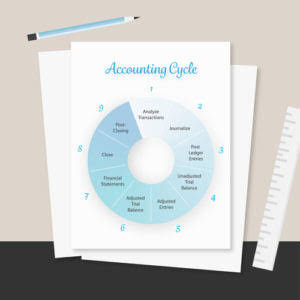- Your cart is empty
- Continue Shopping
General Ledger Definition
Content
- The general ledger is the heart of your accounting system
- General ledger – What is a general ledger?
- General Ledger Account Definitions
- General Ledger and Financial Statements
- General Ledger
- MIT’s Federal Tax Exemption Letter
- Income Statement – Accounts used to record financial activity in during the fiscal year.
- – CONTRACTUAL & SPECIAL SERVICES

These accounts include operating revenue and expenses, as well as non-operating revenue, expenses, gains, and losses. Unlike balance sheet accounts that are carried forward, income statement accounts are temporary and closed at the end of each year. They begin https://www.bookstime.com/ the year with a zero balance, and the year-end balance gets rolled into the retained earnings account on the balance sheet. Financial documents like the income statement, balance sheet, and cash flow statement show the financial health of your business.

The chart is usually organized to show all balance sheet accounts, followed by all income statement accounts. Examples of other general ledger accounts that are commonly used are noted below.
The general ledger is the heart of your accounting system
In accounting software, the transactions will instead typically be recorded in subledgers or modules. General Ledger Account Every minute saved on making journal entries is time you can invest in your business.
Some Debitoor plans also offer the option to create financial statements such as the profit & loss report, balance sheet, and VAT report with just a click. This subsidiary ledger would then be totalled and compared with its controlling account to ensure that accuracy is part of the process of preparing a trial balance. The accounts are designed to allow a company to record all transactions that occur. Closely connected to the general ledger is the chart of accounts, the size of which can vary depending on the size of the company . As organizations continue to digitalize, organizations are staring at high-quality, real-time data.
General ledger – What is a general ledger?
Those with debit balances are separated from the ones with credit balances. The debit and credit accounts are then totaled to verify that the two are equal. If they aren’t, the accountant looks for errors in the accounts and journals.

It tells you everything you need to know about what healthy books look like. Though reporting options are fairly basic in FreshBooks, reporting choices have improved in recent years, with both dashboard and insight reports available. One of the best ways to better manage your expenses is to view in detail exactly what you’re paying each month.
General Ledger Account Definitions
While the above accounts appear in every general ledger, other accounts may be used to track special categories, perform useful calculations and summarize groups of accounts. The general ledger should include the date, description and balance or total amount for each account. The accounting cycle records and analyzes accounting events related to a company’s activities. Investopedia requires writers to use primary sources to support their work. These include white papers, government data, original reporting, and interviews with industry experts. We also reference original research from other reputable publishers where appropriate.
- All amounts being credited to those departments of the University that have been established to provide service to the University community.
- Accordingly, Sage does not provide advice per the information included.
- It’s an essential accounting record for creating financial reports, which are crucial for evaluating business health.
- We will work with you to uncover which accounting system is right for your new business.
The fifth segment of the new GL accounting key is the Future segment. The FUT segment has been reserved to meet any future requirements UAB may have that necessitate the expansion of the GL accounting key. The fourth segment of the new GL accounting key is the Organization segment.
General Ledger and Financial Statements
These records and the financial data they contain can help accountants spot unusual, erroneous or fraudulent transactions. The Print Sequence field defines the order in which balance sheets and trial balances are printed. If the Print Sequence field is empty, the ledger accounts are printed in alphanumeric order. The sublevel of a ledger account is defined in the Chart of Accounts session.
- Then, you summarize that information in a master notebook—the general ledger.
- Double-entry transactions, called “journal entries,” are posted in two columns, with debit entries on the left and credit entries on the right, and the total of all debit and credit entries must balance.
- These tools integrate core accounting functions with modules for managing related business processes.
- Also, both the Organization and Balancing segment values must match between the two account strings.
- At Ignite Spot, our firm strives to oversee the accounting needs of businesses large and small.
- Having a future use segment will result in minimal work to be done if a subsequent event arises causing the need for an additional accounting key segment.
Accounts Payable Ledger – Opposite of the accounts receivable ledger is the accounts payable ledger, which tracks the amounts your business owes to third parties. This ledger helps you avoid missing payments and racking up late filing penalties. Your general ledger needs consistent maintenance and oversight to verify everything is flowing through to the correct place. Your general ledger acts as the backbone of your accounting function, meaning if there is an incorrect set up, the mistake could keep repeating itself, going undetected.
General Ledger
Costs involved in retiring principal and meeting reserve requirements of required indebtedness obligations. Costs involved in paying interest of required indebtedness obligations. For costs incurred on behalf of qualified individuals under certain sponsored projects with a statement of work that includes this activity.
All costs incurred for longevity pay of professional and non-faculty academic personnel. All costs incurred for salaries of Graduate Teaching Assistants, Graduate Assistants, and Graduate Research Assistants with EE subgroup codes of 25, 27, or 45.
When you hire a bookkeeper who understands your industry, they’re able to set up your books using sub-ledgers that make sense for you. Whether creating a budget or calculating your accounts receivable turnover, one of the best places to start is with the general ledger. To understand what a general ledger account is, you must first have a solid understanding of what a general ledger is, and the primary purpose it serves. They would typically do this when a particular account had a large number of transactions that would clutter up the general ledger. Debit “expense” and credit “cash” in both the journal and the ledger.
The latter is less common and suited to smaller, simpler businesses without many monthly transactions. Mary Girsch-Bock is the expert on accounting software and payroll software for The Ascent. QuickBooks Desktop offers excellent general ledger reporting options for small and growing businesses alike. Designed for the single-user office as well as growing businesses with multiple users, QuickBooks Desktop offers three plans to choose from. GnuCash includes excellent reporting options, with detailed asset and liability reports as well as a complete general ledger report. Reports offer little in the way of customization, but there are so many reports available, that customization will likely not be an issue. If at any time the sum of debits for all accounts does not equal the sum of credits, the equation will not balance, and you’ll know you’ve made a mistake.
MIT’s Federal Tax Exemption Letter
The balance column shows the account’s balance after every transaction. In limited cases, a balance sheet account string will have no related income statement account strings at all. This relationship is known as a “stand-alone balance sheet,” and is not permitted except in the Central and Hospital general operating funds.

During the bookkeeping process, other records outside the general ledger, called journals or daybooks, are used for the daily recording of transactions. The general journal consists of the accounting entries for each business transaction that occurred in order by date. The purpose of the trial balance is, at a preliminary stage of the financial statement preparation process, to ensure the equality of the total debits and credits.
All costs incurred for classroom and laboratory furniture, computers, and equipment needed to conduct the normal program of the activity. All amounts being credited to those departments of the University that have been established to provide service to the University community. Examples are Graphic Arts Service, Photographic Center, Transportation Services, etc. All costs incurred for specialized services provided by other University departments such as photographic services, health care, central administration charges, etc. All costs incurred for patient costs per special grant or contract arrangements. All costs incurred for awards made directly to faculty and others that are not to be considered as earnings to be paid through the payroll process.
What is journal entry and ledger?
Journal is a subsidiary book of account that records transactions. Ledger is a principal book of account that classifies transactions recorded in a journal. Order. The journal transactions get recorded in chronological order on the day of their occurrence.

